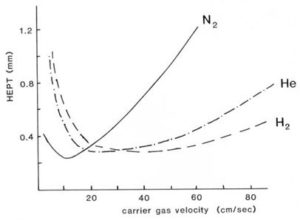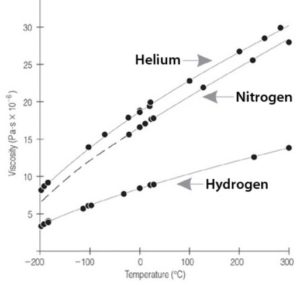Helium Prices: Nowhere but Up!
The price of privately held helium has nearly tripled in the past 10 years. You can find many articles on the internet about the cause of this price increase, including this one in the Washington Post and this one in Popular Mechanics.
The situation is complex and cannot be described in a few sentences but I will try:
 The world’s largest supply of helium is located in the Texas panhandle near Amarillo. It is called the U.S. Federal Helium Reserve and it’s owned by the Federal Government. A 1996 Congressional mandate moved to privatize the helium business by 2015 so the government has been on a 15 year tear to sell down the Reserve and get out of the helium business. The government has been selling helium at below market prices and as a consequence, private industry has been slow in getting into the helium production business. Now that the Reserve is getting low there have been spot shortages and limited private supplies to meet the demand. The government has recently tried to adjust the pricing to market levels. The spot shortages and the price adjustments have led to irregular pricing of helium around the world.
The world’s largest supply of helium is located in the Texas panhandle near Amarillo. It is called the U.S. Federal Helium Reserve and it’s owned by the Federal Government. A 1996 Congressional mandate moved to privatize the helium business by 2015 so the government has been on a 15 year tear to sell down the Reserve and get out of the helium business. The government has been selling helium at below market prices and as a consequence, private industry has been slow in getting into the helium production business. Now that the Reserve is getting low there have been spot shortages and limited private supplies to meet the demand. The government has recently tried to adjust the pricing to market levels. The spot shortages and the price adjustments have led to irregular pricing of helium around the world.
Recently there have been appeals made to Congress to do something about the looming helium shortage. Many industries rely on helium and this has prompted Congress to consider extending the 2015 sell-off deadline and selling helium at market prices so private industry has the incentive to develop production. But even when industry finally gears up helium production it is speculated there is only 20 – 25 years of helium supply left.
Any way you look at it – higher helium prices are baked into the pie.
Implications For Chromatographers

Plate Height vs. Velocity
For years helium has been widely used by chromatographers as the carrier gas of choice. As the Van Deemter chart shows, helium is a very efficient mobile phase. One might argue it has better efficiency than hydrogen if flow rates are optimized. It is non-flammable and works with a greater number of detectors. But its wide use in GC applications is due more to habit and less to scientific rational. Indeed, if higher efficiency is the most sought after quality in a mobile phase then more emphasis would be focused on using nitrogen as a carrier gas. But the narrow operating range and slow analysis times that go with nitrogen take it out of consideration for most laboratories. Hydrogen is nearly as efficient as helium and has several other favorable qualities that many would argue make it a better carrier gas choice.
Reduce Helium Usage
Gas saving technology developed for gas chromatographs has been helpful in making efficient use of helium. Further reductions in helium usage can be achieved by reducing the diameter and length of chromatography columns. Fast GC methods that analyze samples quickly using very low volumes of helium are being developed at a rapid pace.
The ultimate solution to the helium problem is to not use helium at all. Hydrogen is an ideal replacement for helium.
Benefits of switching from helium to hydrogen carrier gas
-

Viscosity vs. Temp
Hydrogen is abundant and cheap. In lieu of hydrogen tanks, hydrogen generators can be used to provide a steady supply.
- Hydrogen is half as viscous as helium so lower head pressures are required.
- It is highly efficient. It has the flattest Van Deemter curve (see chart above). Compared to helium and nitrogen, hydrogen needs the lowest plate number to achieve the same resolution over a large range of linear velocity. Mild variations in flow rate do not create problems. It also operates best at higher linear velocity so run times are shorter.
What’s The Catch?
There are two main concerns when switching GC methods to hydrogen carrier gas:
- Some methods will have to be redeveloped
- Hydrogen presents an explosion risk
Not all methods will need to be redeveloped. The best indicator of the likelihood a method will need redevelopment is the complexity of the chromatogram. Care must be taken with chromatograms having lots of peaks – and lots of closely eluting peaks. If data is expected to match historical data then it is imperative that peaks maintain elution order and separations.
The biggest impediment to changing to hydrogen is this redevelopment step.
Help Is Available!
The Envantage Method Translator (EMT) has been developed to assist chromatographers in developing Fast GC methods or making other method changes such as changing carrier gas. The following slideshow gives a quick overview of EMT at work converting a method from helium carrier gas to hydrogen carrier gas. It also addresses the safety issue of using flammable hydrogen. Envantage is the exclusive North American distributor of the Da Vinci DVLS3 Simply, Smart Sensor. The DVLS3 hydrogen sensor is installed in the GC and has functionality that shuts off the carrier gas stream and sends alarms.
The previous slide show emphasizes EMT’s ability to aid in converting methods to hydrogen but this is only a small part of EMT’s utility. It can also be used to speed up existing methods by using smaller diameter, thinner-film columns. EMT will translate a new head pressure, temperature program, and split ratio so that your new chromatogram will look like the old. If a switch to hydrogen is not in the cards then a reduction in helium usage can be achieved by switching to Fast GC methods.
The following slide show was created last year from a presentation given at the 2011 Gulf Coast Conference. It describes the Envantage Method Translator in much greater detail and shows a good example of a chromatogram reduced in time from 60 to 11 minutes. It also shows why simply switching the carrier gas from Helium to Hydrogen and maintaining head pressure cannot possibly produce the same chromatogram.
Method Translation Services Now Available
Envantage has recently announced new Method Translation Services for laboratories wishing to move to hydrogen carrier gas. Laboratories with limited time and resources may want to use our Consulting and Advisement service or have us do the conversion with our Implementation service. A Single Method Translation service is available for laboratories that may find it more economical for us to provide translated settings than it is to purchase the program.

